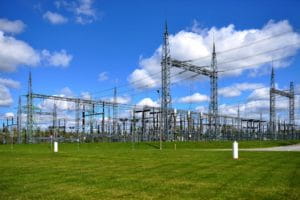
Power systems keep companies running during emergencies, and one way to determine whether your systems can handle real-world conditions is by performing a load bank test. Load bank testing helps validate performance, uncover hidden weaknesses and increase dependability.
Testing your system after installation and during regular maintenance using various tools and strategies provides the insights you need to ensure power reliability. Learn more about the importance of load testing below.
When to Conduct Load Bank Testing
There are a few specific situations when power system testing is necessary:
Before High-Traffic Events
When preparing for an event or period that requires an increased power supply, testing your equipment assures you that your systems can handle the anticipated load. High-traffic periods may push power systems to their limits, making it vital to verify that all equipment can handle the load. The process allows you to make any adjustments well before the event.
After Installation
Power systems may endure mechanical stress during shipping. Vibrations, impacts or environmental exposure might compromise internal parts. Post-installation testing acts as a validation step. It confirms everything works harmoniously within these systems. Testing also applies in setups where components and integrations might introduce unexpected challenges.
As Part of Routine Maintenance
Cleaning and inspecting components are standard, but these measures only go so far in ensuring long-term reliability. Load bank testing takes maintenance a step further under real-world conditions. Electrical equipment that appears fine on the surface may struggle under a full load because of internal wear or other unseen problems. This approach helps uncover hidden issues that visual inspections might miss.
Following Repairs or Upgrades
If you’ve replaced or upgraded components, load bank testing helps you confirm the repairs were successful and that changes integrate seamlessly with existing infrastructure. Repairs, upgrades and reconditions to improve capacity may alter the system’s performance. Testing prevents these changes from introducing inefficiencies.
Load Bank Testing Benefits
No power system is infallible. Without regular testing, minor issues may slowly turn into disruptions, making load bank testing essential. It offers the following benefits:
Helps Identify Hidden Weaknesses
Power systems often appear to function well under light loads, but hidden weaknesses can surface when the system is pushed to its limits. Load bank testing simulates real-world conditions, revealing weaknesses such as poor fuel efficiency, voltage irregularities or inadequate cooling. Testing allows you to address these vulnerabilities before they become operational risks.
Improves Power System Reliability
Testing provides insights into voltage drops, energy losses and fuel wastage. These inefficiencies can result from aging insulation, loose connections and misaligned components. In critical environments like hospitals, backup power systems must function flawlessly during emergencies to power equipment, tools and lighting. Load bank testing allows systems to be ready to perform in crises.
Optimizes Performance
Every power system has an optimal operation threshold, but wear and tear, aging components and functional changes can cause efficiency to decline. Power system testing helps identify performance bottlenecks. By addressing these inefficiencies, you can lower operational costs and extend the life span of your equipment. With the increasing focus on sustainability and energy efficiency globally, improving performance is a cost-saving measure and a way to reduce your environmental footprint.
Prolongs Equipment Life Span
Power systems are significant investments, and protecting that investment is a priority. Regular testing helps identify early signs of wear or malfunction, allowing for timely maintenance to extend the life span of critical components.
Meets Compliance and Regulatory Standards
Many industries operate under strict regulations that mandate regular testing of power systems. These requirements are critical in sectors where system failure can have far-reaching consequences. Load bank testing aids in maintaining compliance, as you’ll have documented proof that your system can meet its designed load requirements.
Some standards include:
- The National Fire Protection Association’s NFPA 110 requires emergency generators to be tested monthly at 30% of their rated load and annually at around 50% of their load.
- IEEE Standard 1547 requires systems integrated with renewable energy to undergo tests for interoperability and grid readiness.
Provides Readiness During Emergencies
A robust and reliable power backup is essential during natural disasters or unexpected outages. Testing power systems means your equipment will be ready to perform during these critical moments. For example, an unexpected power loss during drilling operations could result in production halts or safety hazards in the oil and gas industry. Testing these systems under simulated emergency conditions ensures they respond effectively when needed.
Types of Load Bank Tests
Here are common types of load bank tests.
1. Resistive Load Testing
Resistive load bank testing is the most straightforward form that can apply a consistent load to the system. This test mimics the conditions that everyday equipment and appliances place on the system, focusing on the power source’s capacity to handle a full-rated load. It provides a clear baseline for system performance under normal conditions. Resistive testing is ideal for assessing whether your electrical power system can handle maximum power without issues like overheating or voltage instability.
2. Reactive Load Testing
Reactive load testing simulates the effects of inductive and capacitive loads, such as those created by motors, transformers and other equipment with complex electrical characteristics. This test evaluates how well the power system manages the phase shift between voltage and current. Some industrial systems operate with significant reactive loads, which resistive tests cannot simulate. Reactive load testing ascertains a power system can maintain stable performance.
3. Combined Load Testing
Combined load testing integrates resistive and reactive loads to replicate real-world scenarios as closely as possible. This test evaluates a power system’s capabilities, including handling simultaneous linear and nonlinear loads. Combined testing is valuable if you rely on complex power systems. It ensures the system can manage a realistic mix of loads — from lighting and heating, ventilation, and air conditioning (HVAC) systems to IT infrastructure and utility equipment.
Combined testing offers the most comprehensive picture of system performance. This makes it the go-to for organizations that need absolute confidence in their power systems.
4. Load Rejection Testing
Load rejection testing evaluates how the power system responds when the load is suddenly removed. It tests the system’s ability to return to a stable, no0-load state without issues like over-speeding or over-voltage. Load rejection scenarios often occur during emergencies or unexpected shutdowns. This test gives the system the necessary reliability to handle these situations without damaging components or causing disruptions. This test also examines how quickly the system can recover from a load rejection event to prepare for the next demand cycle.
5. Step Load Testing and Black Start Testing
Step load testing gradually increases the load on the power system in controlled increments, observing how the system responds at each level. This test assesses system performance under varying load conditions and identifies its maximum capacity. Step loading is useful for spotting weaknesses in system ramp-up capabilities, such as delays in stabilizing voltage or frequency after a load increase.
Black Start Testing evaluates whether power systems can start up independently without relying on an external power source. This is critical for power systems and microgrids designed to provide emergency power.
How to Conduct Load Bank Testing
Understanding load bank testing procedures helps you complete them properly. Here are a few steps to consider:
1. Preparation and Planning
Before starting the test, establish clear objectives so the power system is ready for evaluation. Preparation steps include:
- Defining the objectives: Determine the purpose of the test. Are you evaluating a newly installed transformer, confirming post-repair performance or verifying readiness for peak demand?
- Confirming system specifications: Identify the system’s rated capacity, voltage levels and operational conditions.
- Verifying safety: Confirm that all personnel are trained in load bank testing protocols and safety standards. They must also wear personal protective equipment (PPE) and follow industry safety standards.
2. Select the Right Load Testing Tool
Since load banks come in various types, choosing the appropriate one can give you accurate results and a meaningful evaluation. Resistive load banks are best for systems handling linear loads, while reactive varieties are ideal for motors and transformers. Combined load testers are useful for systems with linear and nonlinear loads and work best if you’re looking to test complex electrical equipment.
3. Set up the Load Bank
Proper setup helps your tests run smoothly and deliver accurate results. Follow these steps to verify all connections:
- Secure connections: Connect the load bank to the system using appropriately rated and insulated cables. Tighten the connections and ensure they’re free of defects.
- Verify calibration: Confirm that the load bank is calibrated to match the power system’s specifications.
- Conduct initial inspection: Perform a visual and physical inspection of the power system to identify any obvious issues.
4. Perform the Load Test
The actual testing phase involves applying load increments to the system and monitoring its performance under different conditions.
- Start with small loads: Gradually apply load increments of the system’s rated capacity to observe the system’s response at each stage.
- Simulate real-world scenarios: For transformers, this might include evaluating voltage regulation under varying loads or observing temperature stability during extended operation.
5. Monitor and Collect Data
As the test progresses, monitor the following:
- Voltage and frequency stability: Ensure the system maintains consistent output under load.
- Insulation performance: Check for insulation resistance to confirm the quality of internal components.
- Temperature levels: Monitor heat generation so the cooling system functions properly.
6. Post-Evaluation and Documentation
The final step is to analyze the collected data, evaluate the system’s behavior and plan necessary follow-up actions.
- Analyze results: Compare test data to expected performance metrics.
- Plan corrective actions: Address any identified issues by replacing damaged components or recalibrating the system.
- Document findings: Keep detailed records of test results, including operation baseline, identified weaknesses and corrective measures taken.
Best Practices for Conducting Load Bank Testing
Safety measures during load bank testing can prevent equipment damage, electrical hazards and personal injury. Adhere to the following best practices during the assessment:
Conduct Thorough Pre-Test Inspections
Inspect the power system before testing for safety and evaluation readiness. Look for:
- Visible damage
- Loose connections
- Worn components
Establish a Safety Protocol
Load bank testing involves high-voltage equipment, making it inherently risky if incorrectly handled. A comprehensive safety protocol should be in place before, during and after load bank testing. This includes proper training or engaging qualified professionals experienced in load bank testing and using PPE. Safety procedures also include:
- Deenergizing and isolating the system before making any physical connections.
- Providing adequate airflow to prevent overheating or fire hazards.
- Establishing a clear boundary around the testing area and keeping nonessential personnel away.
Regularly Calibrate Testing Equipment
Calibrated equipment gives accurate readings to help you make informed decisions about power system performance. Inaccurate results because of uncalibrated tools can lead to overlooked issues or unnecessary maintenance. Use certified technicians or trained personnel to maintain compliance with industry regulations.
Accurate Simulation of Loads
Load bank testing must replicate real-world operating conditions to provide meaningful insights. Simulating inaccurate or unrealistic loads can result in data that does not reflect actual system performance. Match the simulated load to the system’s operational profile, including resistive, inductive and nonlinear loads.
Gradual Load Application
Sudden load application can cause system stress, leading to inaccurate results or damage. Gradual load application allows for controlled observation and stabilization. Apply load incrementally, starting with 25% and progressing to 50%, 75% and 100% of the system’s rated capacity. Allow sufficient time at each stage to monitor voltage, temperature, and frequency stability.
Warm up the Power Source and Monitor Throughout the Process
Warming the power source can prevent internal components from getting damaged and allow internal components to reach optimal operating conditions. Load bank testing generates a wealth of data that must be monitored and recorded to identify trends and evaluate system performance. The process can also help you identify anomalies that need inspecting.
Contact Sunbelt Solomon for Custom Power Systems
Sunbelt Solomon has over 100 years of experience delivering reliable electrical power system solutions to the needs of manufacturing, data centers, utilities, renewable energy and oil and gas companies. We provide system repairs, reconditioning, rentals and maintenance. Our extensive inventory of reconditioned transformers offers quicker lead times to get you up and running in emergencies.
We deliver, install and provide temporary rentals to keep your systems operational while we manufacture your new unit. Our team takes a sustainable approach by giving your old system a second life through reconditioning or safely disposing of used components. Our equipment is built to last and provide continuous performance backed by warranties. Contact us today to order a transformer or get a quote.






